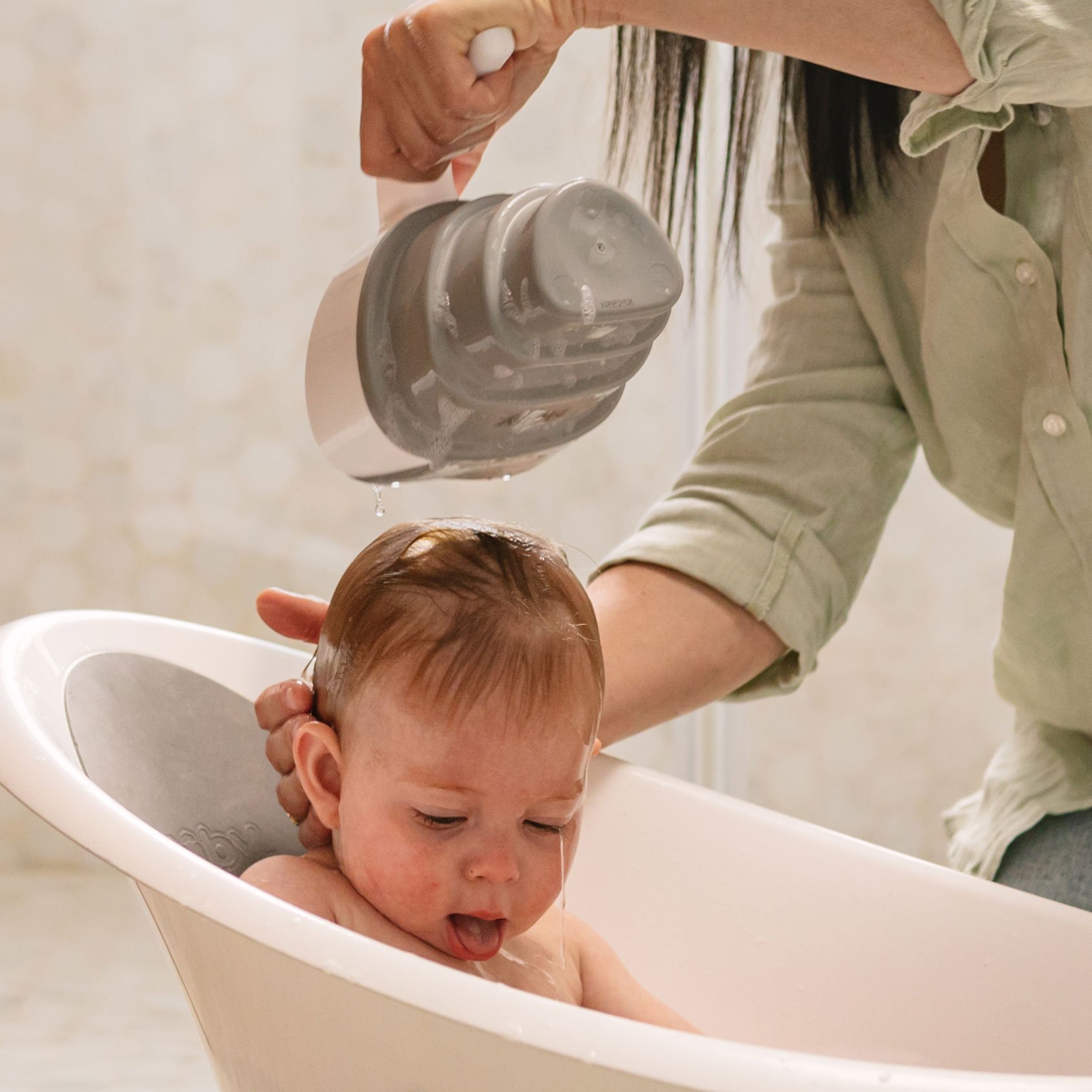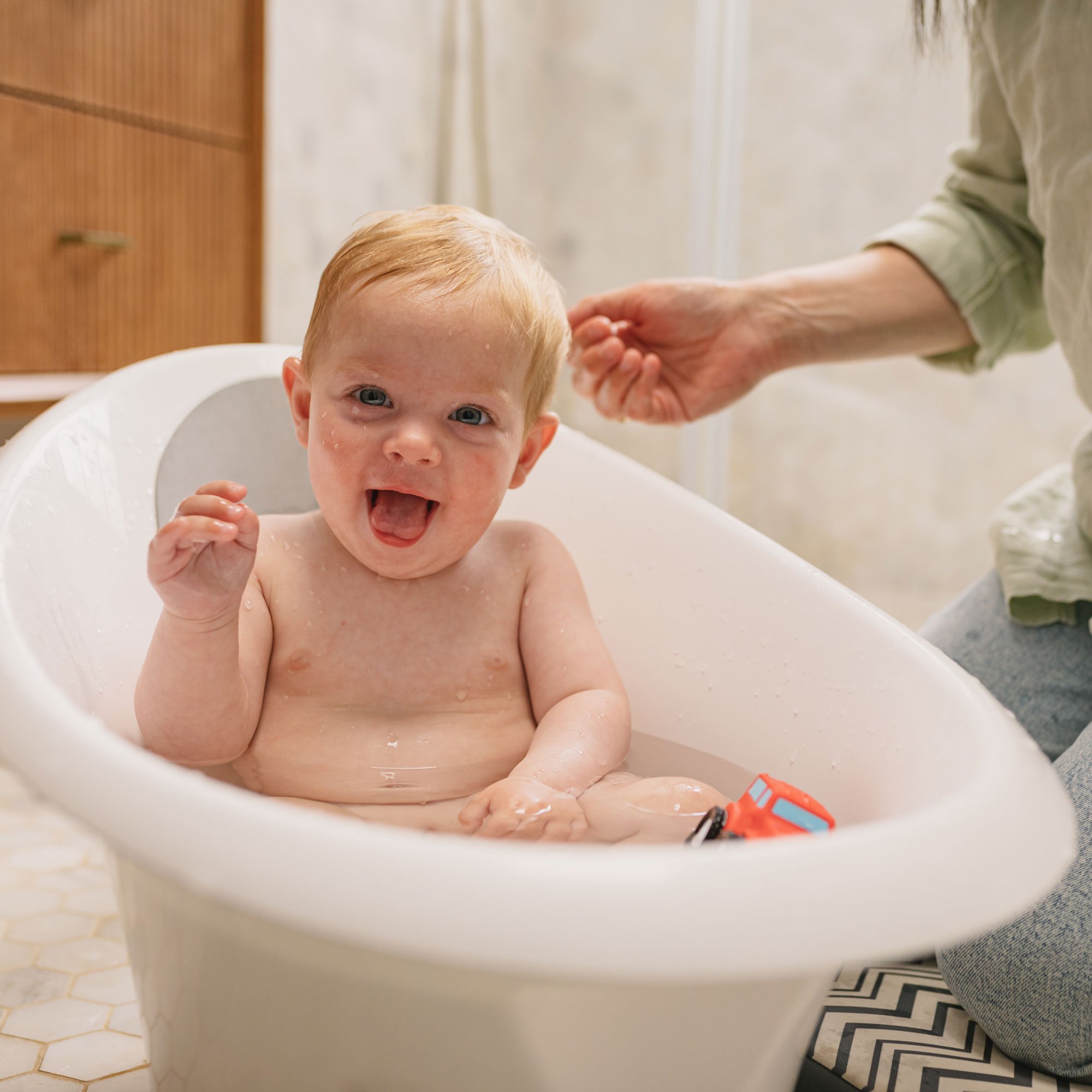Guide to Breast Milk Baths for Babies
We have all heard the benefits of breastfeeding, but did you know breast milk baths are another great way to support your baby’s well-being? Simply adding breast milk to your baby’s bath can offer many benefits. Unlike shop-bought products, it is 100% natural and completely free. This makes milk baths perfect for parents looking to minimize the use of additives and chemicals.
As a new parent, caring for a newborn can be complicated and confusing. One of the reasons breast milk baths are gaining popularity is that they are just so simple! Breast milk is supercharged to help soothe skin conditions, lock in moisture, and improve immunity. The benefits, simplicity, and cost make them loved by parents around the world.
Our guide will tell you everything you need to know about the benefits of breast milk baths, how to safely do one, and all the important science behind them.

What Are Breast Milk Baths?
Breast milk baths are one of the most accessible ways to support your baby, as they are ridiculously simple.
A breast milk bath = a normal bath for your baby with breast milk added.
When preparing your baby’s bath, add 5-10 oz. of breast milk to lukewarm water. The amount may vary depending on the size of your bath, but you want the water to be cloudy.
Once your baby is in the bath, gently massage them to help with absorption. Try to keep your baby in the bath for between 5 and 15 minutes. However, any parent knows how unpredictable babies are, so any time is beneficial!
The History of Break Milk Baths
There is nothing new about milk baths, and references can be found throughout history. One of the earliest (and most famous) describes Cleopatra taking a daily donkey milk bath to maintain her complexion.
Breast milk baths have been used for centuries to support babies’ well-being. During the twentieth century, their popularity fell as parents favored shop-bought creams and soaps. The last decade has seen a resurgence of breast milk baths, with parents praising their natural restorative power.
Why Are Breast Milk Baths Beneficial?
When caring for your newborn, you want to give them as much support and care as you can. We all know that breast milk helps nurture your baby from within, but it can also be incredibly powerful when applied directly to the skin.
Skin Soothing Qualities
There are many benefits of a milk bath for babies, particularly if they have certain skin conditions, such as:
Diaper Rash: Breast milk contains antibacterial properties that are thought to reduce inflammation and help promote faster healing.
Cradle Cap: There are natural oils in breast milk that have been shown to help soften and loosen the flakes associated with cradle cap.
Eczema: The antimicrobial and antibacterial properties of breast milk help soothe eczema when used regularly.
Gently Clean and Moisturize
As well as soothing specific skin conditions, breast milk baths are also great as a general cleanser and moisturizer for babies. Breast milk contains many supportive fats and proteins that are thought to create a protective barrier on the skin. This locks in the moisture and prevents your baby’s skin from drying out, which can be particularly soothing if they have sensitive skin.
Building Immunity Support
Anyone who has been able to breastfeed is well aware of the immunity-boosting properties it delivers. Breastmilk can also offer benefits when applied topically through bathing.
The Science Behind Breastmilk Baths
Research into breast milk has been extensive, so we have a good understanding of what it’s composed of. We know that breast milk is made up of an array of supportive elements, including proteins, acids, enzymes, and live cells. It’s the acids that are thought to be the most beneficial for the skin, with a few key players:
Palmitic acid: This is the most common saturated acid found in the human body. It’s an amazing moisturizer that helps keep the skin super soft.
Oleic acid: This is an unsaturated fatty acid that helps the skin absorb moisture.
Linoleic acid: This polyunsaturated fatty acid helps maintain and regulate hydration and fight inflammation.
Studies into the benefits of breast milk baths have shown that they can be just as effective as medication in treating some conditions. A recent study compared the use of breast milk and hydrocortisone in treating nappy rash. After seven days, breast milk was shown to be as effective as 1% hydrocortisone cream.
What Equipment Do You Need and How Often Should You Give a Milk Bath?
To enjoy the benefits, we suggest giving your baby a milk bath once or twice a week. However, if you are struggling with your milk supply, less frequent milk baths can still benefit your baby.
Staying Safe and Hygienic
A milk bath can be incredibly beneficial for your baby, but only if done correctly. You should always make sure that the bath has been cleaned before use. Make sure the milk has been stored correctly and has been completely thawed if it was frozen.
Frequently Asked Questions: Breast Milk Baths
Can I use expired breastmilk?
Yes, milk that is no longer recommended for feedingcan still offer benefits to baby's skin.
Do I need to add soap to the bath?
No, the natural benefits of a breastmilk bath are best when left to work alone. Adding soap can dilute the milk and make it less powerful.
Can I use frozen breast milk?
Yes, you can use stored breast milk from the fridge or freezerstorage bags. If you are going to use frozen milk, just make sure it is fully defrosted before you add it to the bath.
Can I give my newborn baby a breast milk bath?
Yes, you can give your newborn baby a milk bath. However, some advise against bathing babies for their first few days, so you should always check with your medical provider first.
Conclusion
Bath time can be one of the joys of caring for a baby. The simple act of adding breast milk to the water can help improve your baby’s immunity, soothe skin conditions, and help add extra moisture. With so many baby prods laden with chemicals and toxins, the benefits of breast milk baths are both natural and holistic. With the correct practice and consulting a pediatrician, if needed, you can enjoy the most natural way to bathe your baby.
For more tips, including how to store breast milk correctly and how to defrost frozen breast milk, explore our articles or join our wellness club.
